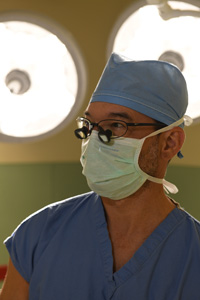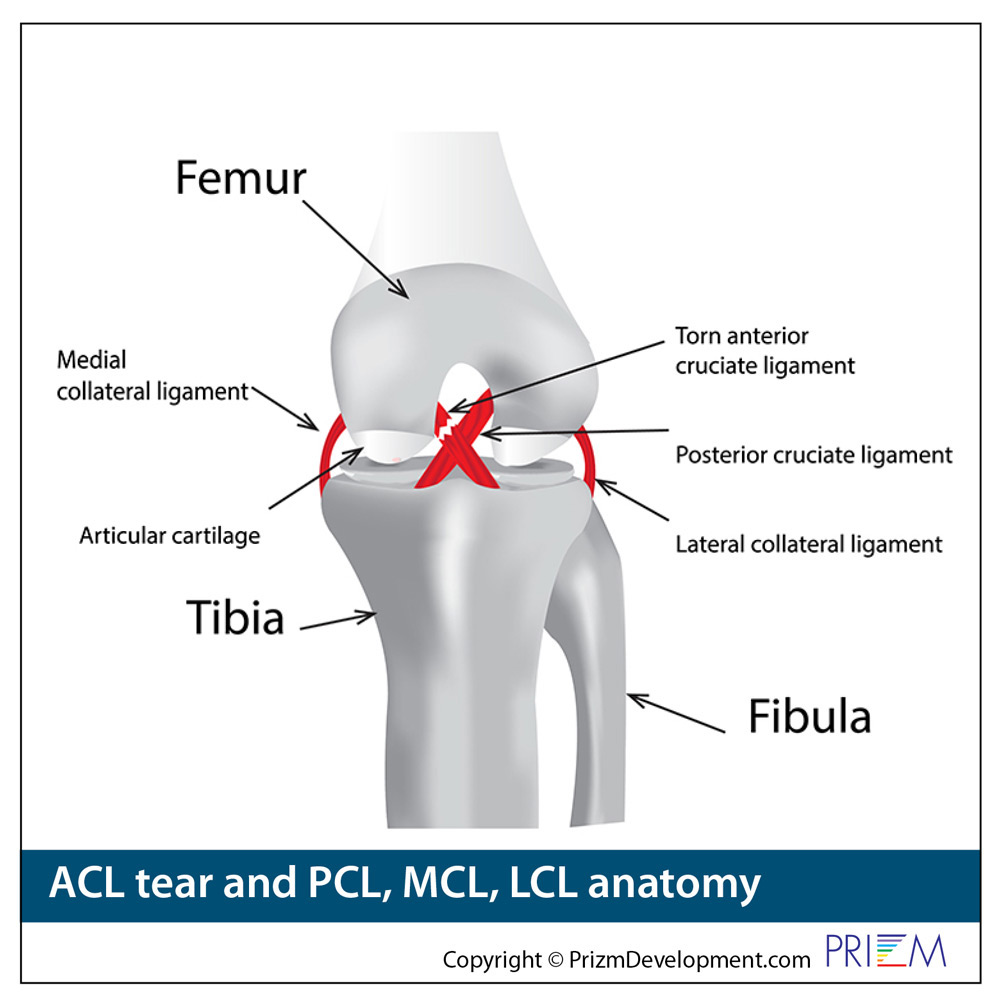ACL Reconstruction
![]() Treatment for an ACL tear varies depending on the patient’s individual needs. A torn ACL will not heal without surgery. But non-surgical treatment may be effective for patients who are elderly or have a very low activity level. If the overall stability of the knee is intact, your Celebration Orthopaedics surgeon may recommend simple, non-surgical options.
Treatment for an ACL tear varies depending on the patient’s individual needs. A torn ACL will not heal without surgery. But non-surgical treatment may be effective for patients who are elderly or have a very low activity level. If the overall stability of the knee is intact, your Celebration Orthopaedics surgeon may recommend simple, non-surgical options.
-
Bracing. Your doctor may recommend a brace to protect your knee from instability. To further protect your knee, you may be given crutches to keep you from putting weight on your leg.
-
Physical therapy. As the swelling goes down, a careful rehabilitation program is started. Specific exercises prepared by our rehabilitation therapy department will restore function to your knee and strengthen the leg muscles that support it.
-
Rebuilding the ligament. Most ACL tears cannot be sutured (stitched) back together. To surgically repair the ACL and restore knee stability, the ligament must be reconstructed. Your Celebration Orthopaedics orthopaedic surgeon will replace the torn ligament with a tissue graft. This graft acts as a scaffolding for a new ligament to grow on.
Surgical treatment is most frequently recommended for individuals with ACL tears accompanied with other injuries. The most likely candidates for surgical treatment are active individuals in sports or jobs with heavy manual work that requires pivoting or pushing off with the knee. Surgery is also recommended for people with unstable knees or injuries combined with damage to the menisci, articular cartilage, joint capsule, or ligaments.
Surgery to rebuild an anterior cruciate ligament is done with an arthroscope using small incisions. Arthroscopic surgery is a less invasive technique with the benefits of less pain from surgery, less time spent in the hospital, and quicker recovery times.
Torn ACL Surgery
The Anterior Cruciate Ligament (ACL) works a lot like a guy wire that keeps the femur and the tibia stable. When an athlete tears their ACL, it is usually from a sudden impact that can cause an audible pop or at least a great deal of pain.
A partially torn ACL stands a chance of recovery without surgery. If the ACL is completely torn, most will need surgery to repair the ligament. Many of those with a torn ACL will need surgery to get back to activity. The procedure itself takes about one hour.
Torn ACLs are one of the most common problems associated with sports. It is important to understand your options if you have a torn ACL.
If you have a completely torn ACL, you will likely need surgery to repair this ligament. If you have a partially torn ACL, depending on the extent of the tear, some people are able to rehabilitate the knee with extensive therapy AND COMMITMENT TO EXERCISE to the point that they regain of the knee again. But you may not have the same strength in the knee joint that you had prior to your knee injury.
Generally speaking, the more you expect to play aggressive sports in the future, the more likely you will need knee surgery to repair a fully torn or partially torn ACL. If you are a professional athlete, chances are you will need surgery to get back to full activity.
If you have a torn ACL, the good news is that the problem is fairly common as knee injuries go, and in the hands of a surgeon who specializes in knees, the post-surgical knee can be as effective as the knee prior to injury. But most of that depends on the willingness of the athlete to invest the time to rehabilitate and strengthen the knee.
Use of the patellar tendon or hamstring to repair a torn ACL
You should be aware that repairing the torn ACL does NOT involve sewing two torn ends together. Think of your ACL as a rubber band. Once it snaps, it can not be sewn together. Instead, you have to replace the rubber band completely. And that is exactly what the knee surgeon does. They attach a new rubber band to your shin, thread it through your knee, and anchor it to your femur.
You should ask your physician HOW they repair the ACL. Some knee surgeons use a patellar tendon, while many others use a hamstring ligament. There are pros and cons to each.
Harvesting a patellar tendon from the front of the knee makes for a more painful recovery and painful rehabilitation. However, professional athletes who are used to pain from training are more able to tolerate this approach, especially considering that the patellar tendon is viewed by some surgeons as a higher performance replacement for the torn ligament than the hamstring. Using a hamstring ligament is less painful for knee rehab, and some surgeons feel that for most people, the strength of the ligament is sufficient.
Overall, most surgeons would agree that the performance of the knee after ACL replacement is directly linked to how much commitment is given to strengthening the knee with exercises. With the right knee specialist and specialized knee rehab, a professional athlete can regain their competitive form and play professional sports again.
 Using an arthroscope, the knee surgeon can repair the knee through two tiny half-inch incisions instead of a longer incision, which requires a longer recovery and causes a bigger scar. The surgeon will remove a strand from the patellar tendon or hamstring, which will ultimately become the new ACL. A hole is then drilled through the shin bone, and a new ACL is threaded through. The new ligament is prepared and secured in place. A plastic dowel locks the new ACL into place. About 30 minutes later, the anesthesia will wear off and the patient will be dismissed from the hospital.
Using an arthroscope, the knee surgeon can repair the knee through two tiny half-inch incisions instead of a longer incision, which requires a longer recovery and causes a bigger scar. The surgeon will remove a strand from the patellar tendon or hamstring, which will ultimately become the new ACL. A hole is then drilled through the shin bone, and a new ACL is threaded through. The new ligament is prepared and secured in place. A plastic dowel locks the new ACL into place. About 30 minutes later, the anesthesia will wear off and the patient will be dismissed from the hospital.
During the recovery process, a patient will start off by walking around. A few months later, golf is acceptable. After five or six months, the patient is usually allowed to play sports without restriction.
Recovery
Whether your treatment involves surgery or not, physical therapy plays a vital role in getting you back to your daily activities and will help you regain knee strength and motion.
If you have surgery, physical therapy first focuses on returning motion to the joint and surrounding muscles, and is followed by a strengthening program designed to protect the new ligament. This strengthening process gradually increases the stress across the ligament. The final phase of rehabilitation is aimed at a functional return to the patient’s lifestyle activity level.

 Knee
Knee
 Knee
Knee